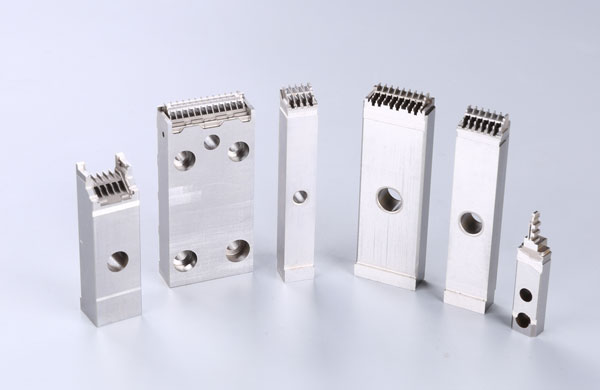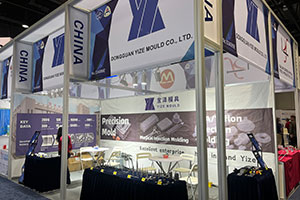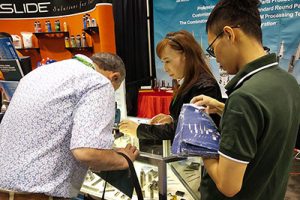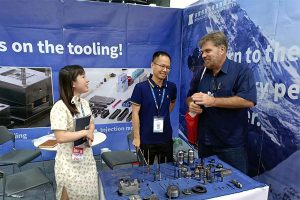Differences Between Tungsten Carbide Tools and Stainless Steel Tools
I. Introduction In the diverse world of tools, tungsten carbide tools and stainless steel tools shine like two bright stars, each exuding a unique charm. Although both are tools made […]
I. Introduzione
In the diverse world of tools, tungsten carbide tools and stainless steel tools shine like two bright stars, each exuding a unique charm. Although both are tools made of metal materials, they differ significantly in terms of composition, hardness, wear resistance, corrosion resistance, and application fields. An in-depth exploration of the differences between these two can not only help us better understand tool materials but also enable us to make more informed choices in practical applications. Next, let’s uncover the mysteries of carburo di tungsteno and stainless steel tools together.
La nostra attività in fabbrica: parti in metallo duro, parti di stampi, stampi a iniezione medicali, stampi a iniezione di precisione, stampaggio a iniezione di teflon PFA, raccordi per tubi PFA. e-mail: [email protected],whatsapp:+8613302615729.
II. Material Composition and Manufacturing Process
- Tungsten Carbide Tools
Tungsten carbide tools, also known as cemented carbide tools, are made through the powder metallurgy method, mainly composed of tungsten carbide (WC) and a metal binder (such as cobalt, Co). Tungsten carbide is a compound with extremely high hardness, second only to diamond, which endows tungsten carbide tools with unparalleled high hardness and excellent wear resistance. The metal binder acts like a magical glue, tightly binding the tungsten carbide particles together to form a solid alloy structure.
The manufacturing process of tungsten carbide tools is like a complex craftsmanship feast. From the precise blending of powders, to the delicate operation of pressing and shaping, and finally to the high – temperature sintering process, each step is crucial. Especially the sintering process, under high – temperature conditions, the tungsten carbide particles and the metal binder are deeply integrated, forming a uniform and dense alloy structure, which lays a solid foundation for the high performance of tungsten carbide tools.
- Stainless Steel Tools
Stainless steel tools are mainly composed of elements such as iron, chromium, and nickel. The addition of chromium is like giving the steel a strong protective shield, enabling it to have excellent corrosion resistance. The manufacturing process of stainless steel tools is relatively simple, mainly using forging and heat treatment as the main processing methods. The forging process is like a “fitness training” for the steel, improving its internal structure and enhancing its strength and toughness. Heat treatment, through the clever changes of heating and cooling, precisely adjusts the properties of the steel, such as hardness and wear resistance, making stainless steel tools more in line with usage requirements.

III. Hardness and Wear Resistance
- Tungsten Carbide Tools
Tungsten carbide tools are the kings in terms of hardness, with a hardness value usually ranging from 82.0 to 93.6 HRA (equivalent to 69 to 81 HRC). Such high hardness allows tungsten carbide tools to perform excellently in cutting, grinding, and other machining processes, easily handling materials of various hardnesses, whether it’s hard metals or stubborn rocks. At the same time, the wear resistance of tungsten carbide tools is also outstanding. During long – term use, they can always maintain good sharpness, greatly extending the service life of the tools. - Stainless Steel Tools
In comparison, the hardness of stainless steel tools is relatively low, generally in the range of 50 to 60 HRC. Although it also has a certain degree of wear resistance, there is a significant gap compared with tungsten carbide tools. In cutting, grinding, and other machining processes, stainless steel tools are more prone to wear and require frequent replacement or regrinding, which undoubtedly increases the cost of use and time.
IV. Corrosion Resistance and Usage Environment
- Tungsten Carbide Tools
Although tungsten carbide tools have the advantages of high hardness and high wear resistance, they are slightly inferior in terms of corrosion resistance. In humid, acidic, or alkaline environments, tungsten carbide tools are like losing their protective umbrella and are easily corroded, which affects their service life and performance. Therefore, when choosing tungsten carbide tools, the specific usage environment must be fully considered to avoid using them in harsh environments to prevent unnecessary losses. - Stainless Steel Tools
Stainless steel tools are well – known for their excellent corrosion resistance. The chromium element in stainless steel combines with oxygen in the air to form a dense oxide film. This oxide film is like a solid defense line, effectively preventing further corrosion of the steel. Therefore, stainless steel tools can still maintain good performance and service life in humid, acidic, or alkaline environments. This makes stainless steel tools widely used in fields such as food processing and medical equipment, becoming an indispensable and powerful tool in these industries.
V. Application Fields and Costs
- Tungsten Carbide Tools
With their high hardness, high wear resistance, and excellent cutting performance, tungsten carbide tools occupy an important position in fields such as metal processing, mold manufacturing, and mining. Especially in high – precision machining and the cutting of difficult – to – machine materials, tungsten carbide tools play an irreplaceable role. However, due to the complex manufacturing process and high cost of tungsten carbide tools, their prices are relatively expensive, which limits their application in some cost – sensitive scenarios. - Stainless Steel Tools
Stainless steel tools are favored in fields such as food processing, medical equipment, and household items due to their excellent corrosion resistance and good overall performance. Their relatively low prices make them suitable for large – scale production and wide application. In addition, stainless steel tools also have good aesthetics and easy machinability, whether it’s delicate tableware or practical surgical knives, they can show their unique charm and become people’s good helpers in daily life.
VI. Conclusione
In summary, tungsten carbide tools and stainless steel tools differ significantly in terms of material composition, manufacturing process, hardness and wear resistance, corrosion resistance and usage environment, as well as application fields and costs. Tungsten carbide tools, with their high hardness, high wear resistance, and excellent cutting performance, play an important role in specific fields such as metal processing. Stainless steel tools, with their excellent corrosion resistance and good overall performance, are widely used in fields such as food processing and medical equipment. When choosing tools, we must comprehensively consider specific usage requirements and environmental conditions, weigh various factors, in order to select the most suitable tool material and maximize the value of the tools in our lives and work.
A professional tungsten carbide processing manufacturer, Yize Mould, provides you with a series of high – quality products such as tungsten carbide molds, tungsten carbide processing, tungsten carbide rollers, tungsten carbide blades, cemented carbide, and tungsten carbide punches. Click here to contact us for more detailed information and start your tungsten carbide processing journey!






